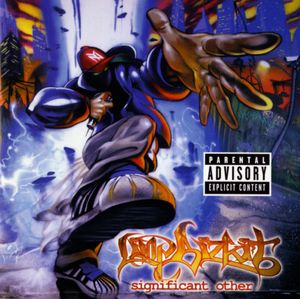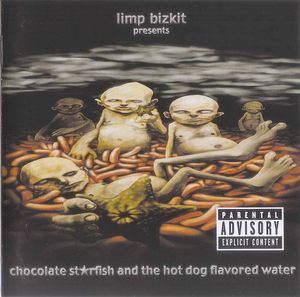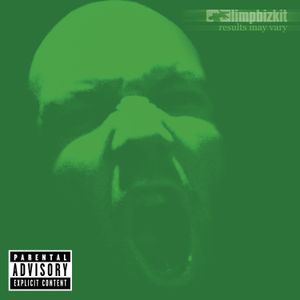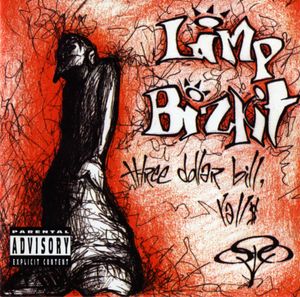
Unleashing the Undisputed Classics: Limp Bizkit’s Top 10 Songs Ranked
Click title to open the Spotify playlist
Limp Bizkit: A Nu Metal Juggernaut
Limp Bizkit, hailing from the Florida swamps of Jacksonville, is more than just a band; they're a nu metal behemoth. Led by the volatile frontman Fred Durst, whose angry vocal delivery is as recognizable as his signature backwards baseball cap, they've carved a distinct path in the music world.
Their sound is a potent cocktail of heavy riffs, aggressive drums, and DJ Lethal's turntablism, all fueled by the sonic experimentation of guitarist Wes Borland. Borland's visual aesthetic – a chaotic blend of face paint, masks, and theatrical costumes – adds another layer to their live performances, transforming them into full-blown rock spectacles.
Their rise to fame was meteoric, fueled by the raw energy of their live shows and their first two albums, "Three Dollar Bill, Y'all" (1997) and "Significant Other" (1999), which catapulted them to mainstream success. Their 2000 album "Chocolate Starfish and the Hot Dog Flavored Water" solidified their status as a global force, though it wasn't without its share of controversy.
Internal turmoil and lineup changes, including Borland's departure in 2001, punctuated their career. Yet, Limp Bizkit persevered, releasing several albums and embarking on countless tours. Borland's return in 2005 brought a sense of normalcy, but the band's journey has been a rollercoaster of highs and lows.
Despite facing criticism and internal conflicts, Limp Bizkit has continued to push boundaries, selling over 40 million records worldwide and garnering three Grammy nominations. Their influence on the nu metal scene is undeniable, and their legacy as a band that defied expectations continues to inspire. Whether you love them or hate them, there's no denying the raw power and unbridled energy that defines Limp Bizkit's unique brand of rock.
Dive into the ultimate ranking of Limp Bizkit’s top 10 songs, showcasing the rap-rock pioneers’ most influential tracks—from raw debut anthems to blockbuster hits that defined the nu metal era. Whether you’re a longtime fan of Fred Durst and co. or a newcomer eager to explore, this list captures the band’s legacy one song at a time.
Our Selection Methodology
These songs were carefully selected based on cultural impact, musical innovation, streaming popularity, and their significance in the band's discography.
🏆 Top 3 Greatest Songs
Why "Nookie" is #1
Topping this list is “Nookie,” the blockbuster smash that catapulted Limp Bizkit to international fame. Opening with a slinking bassline and Fred Durst’s iconic drawl—“I did it all for the nookie”—the song married catchy melody, biting lyricism, and an undeniable rap-rock swagger. Its chorus is ear-worm perfection, instantly recognizable to anyone who lived through the late 1990s. “Nookie” powered Significant Other to multi-platinum success, clinching spots on Billboard’s Hot 100 and earning heavy MTV rotation. The track’s fusion of hip hop rhythms and distorted guitars set a template for countless nu metal bands that followed. More than two decades later, “Nookie” endures as Limp Bizkit’s crowning achievement—an anthem that defined not just an era, but the very essence of rap metal’s mainstream breakthrough.
Why "Break Stuff" is #2
If there was ever a nu metal battle cry, it’s “Break Stuff”—an unbridled outpouring of rage that captured the frustration of a generation. With a belligerent refrain urging listeners to “give me something to break,” Fred Durst’s raw vocals ride atop Wes Borland’s grinding chords and DJ Lethal’s abrasive cuts. It’s aggressiveness distilled into a three-minute blistering anthem. Released as a single from Significant Other, “Break Stuff” dominated MTV and radio, becoming synonymous with mosh pits and stage dives at early-2000s festivals. The song’s ferocity and catch-and-release emotional surge highlighted Limp Bizkit’s ability to channel angst into addictive hooks. Today, “Break Stuff” remains a cultural touchstone for anyone looking to unleash their inner chaos—and a high-octane reminder of the band’s nu metal mastery.
Why "Rollin’ (Air Raid Vehicle)" is #3
Few tracks capture the zeitgeist of early 2000s rock like “Rollin’ (Air Raid Vehicle).” Its head-nod groove, grunge-tinged riff, and Durst’s chant-style vocals created the perfect storm for mosh-pit mayhem. Accompanied by a memorable video shot atop skyscrapers, the song became a global hit and an enduring emblem of rap metal’s mainstream moment. “Rollin’” topped charts in multiple countries and remains a core part of Limp Bizkit’s live setlist. Its catchiness belies the intricacy of DJ Lethal’s samples and the dynamic interplay between band members. More than two decades later, “Rollin’” still blares from car stereos and festival stages, a testament to its unstoppable energy.
📊 Complete Rankings
My Way
With its swaggering beat and infectious hook—"It's my way or the highway"—“My Way” turned Limp Bizkit into chart-toppers once again. Released from the 2000 blockbuster album Chocolate Starfish & the Hot Dog Flavored Water, this track epitomizes the band’s fusion of rap lyricism and arena-ready metal riffs. Fred Durst’s defiant chorus became an anthem for anyone carving out their own path. “My Way” dominated radio and MTV, peaking high on Billboard charts and cementing its status as a nu metal classic. The song’s success helped Chocolate Starfish & the Hot Dog Flavored Water debut at No. 1 on the Billboard 200, marking the peak of Limp Bizkit’s commercial reign. Even today, “My Way” ignites crowds with its unapologetic attitude and bold production.
Take a Look Around
Engineered as the theme for the blockbuster Mission: Impossible 2 film, “Take a Look Around” solidified Limp Bizkit’s place in pop culture history. The track built on the iconic MI-2 motif—melding it seamlessly with heavy guitars, DJ Lethal’s turntable wizardry, and Durst’s commanding vocals. Its explosive chorus and spy-thriller atmosphere made it a standout single that transcended the typical nu metal fan base. “Take a Look Around” became synonymous with high-stakes action, landing heavy rotation on MTV and radio worldwide. For many listeners, this song was their first exposure to Limp Bizkit’s larger catalog, leading countless fans to dive deeper into the band’s discography. It remains one of the most recognizable intersections of rock and Hollywood in the early 2000s.
Behind Blue Eyes
Covering The Who’s classic “Behind Blue Eyes” was a bold move for Limp Bizkit, and in 2003 they reimagined it with lush strings, acoustic guitars, and a soaring vocal performance from Fred Durst. This rendition accentuated the song’s melancholic core while injecting the band’s signature rap-rock edge, creating a hybrid that resonated with both rock purists and nu metal devotees. Limp Bizkit’s “Behind Blue Eyes” topped international charts and showcased the band’s versatility. By embracing a timeless rock ballad and making it their own, they proved that rap metal could be more than just aggressive riffage—it could also deliver emotional nuance and crossover appeal.
Re-Arranged
As the closing track on 1999’s Significant Other, “Re-Arranged” showcases Limp Bizkit’s evolving maturity and emotional depth. Departing from their usual party-hard anthems, this song weaves introspective lyrics about betrayal and redemption over a haunting melody. Durst’s candid delivery reveals vulnerability beneath the band’s tough exterior, making “Re-Arranged” one of their most memorable ballads. Beyond its lyrical weight, “Re-Arranged” became a powerful live moment—the dramatic buildup and cathartic chorus uniting fans in a collective release. It solidified Limp Bizkit’s ability to balance aggression with genuine feeling, a duality that kept critics and new listeners intrigued even as nu metal’s mainstream popularity surged.
Faith
When Limp Bizkit dropped their heavy reinterpretation of George Michael’s “Faith” in 1998, few saw it coming. Stripping away the pop polish and infusing the track with crunchy guitars, DJ Lethal’s skittering scratches, and Durst’s playful taunts, the cover became a surprising crossover hit. It struck gold on MTV and radio, showcasing the band’s ability to transform a pop classic into a head-banging anthem without losing its catchy core. “Faith” highlights Limp Bizkit’s fearless approach to genre-bending—melding hip hop bravado with metal’s muscle. Its success opened doors to new audiences and demonstrated that the band could tackle unexpected material with authenticity and swagger. To this day, “Faith” stands as a testament to their irreverent creativity and knack for turning familiar tunes into adrenaline-fuelled experiences.
My Generation
After a period of internal changes and high expectations, Limp Bizkit delivered “My Generation” in 2003—a hard-charging anthem that proved they still commanded the nu metal throne. Backed by a driving groove and a chorus designed for stadium-sized sing-alongs, the track reaffirmed Fred Durst’s knack for merging rap cadence with rock aggression. The music video, featuring cameos from Eminem and Snoop Dogg, underscored the band’s hip hop credentials and broad appeal. “My Generation” occupies a unique place in Limp Bizkit’s catalog as a bridge between their early swagger and later experimentation. It introduced fresh sonic textures while staying true to the band’s signature fusion style, earning solid chart placements and radio play. Decades later, the song still resonates at live shows, reminding fans that Limp Bizkit could adapt without losing their nu metal edge.
Counterfeit
From their earliest days, Limp Bizkit made waves with their debut single “Counterfeit,” released in 1997. Fueled by a grinding riff that borrows from punk iconoclasts and Public Enemy–style sampling, this track introduced Fred Durst’s spit-fire delivery and Wes Borland’s off-kilter guitar work. It burst onto college radio with raw energy, instantly signaling that Limp Bizkit wasn’t just another rap-rock act—they were something entirely new. As the lead single from Three Dollar Bill, Y’all$, “Counterfeit” became a live staple, often igniting mosh pits at early shows and underground clubs. The song’s confrontational lyrics and aggressive production cemented the band’s reputation for theatrical intensity. In the broader context of nu metal history, “Counterfeit” remains the gritty blueprint that shaped Limp Bizkit’s rebellious identity and set a high bar for every subsequent release.
🎵 Why These Tracks Define Musical Excellence
Limp Bizkit’s top 10 songs showcase the band’s fearless fusion of rap and rock, their knack for crafting unforgettable hooks, and their willingness to push boundaries. From the raw debut energy of “Counterfeit” to the chart-topping juggernaut “Nookie,” each track reveals a different facet of Fred Durst and company’s creative vision. These songs not only shaped the nu metal movement—they became cultural landmarks that still resonate with fans around the world. As you revisit these classics or discover them for the first time, remember that Limp Bizkit’s legacy extends far beyond the hits. Their catalog is filled with deep cuts, covers, and experimental moments waiting to be explored. Crank up the volume, dive into the riffs, and let these definitive tracks transport you back to a time when rap rock ruled the airwaves—and still rocks our hearts today.
Cultural Impact
Songs that shaped music history and influenced countless artists
Fan Favorites
Tracks with millions of streams and lasting popularity across generations
Last Modified: 10/24/2025




